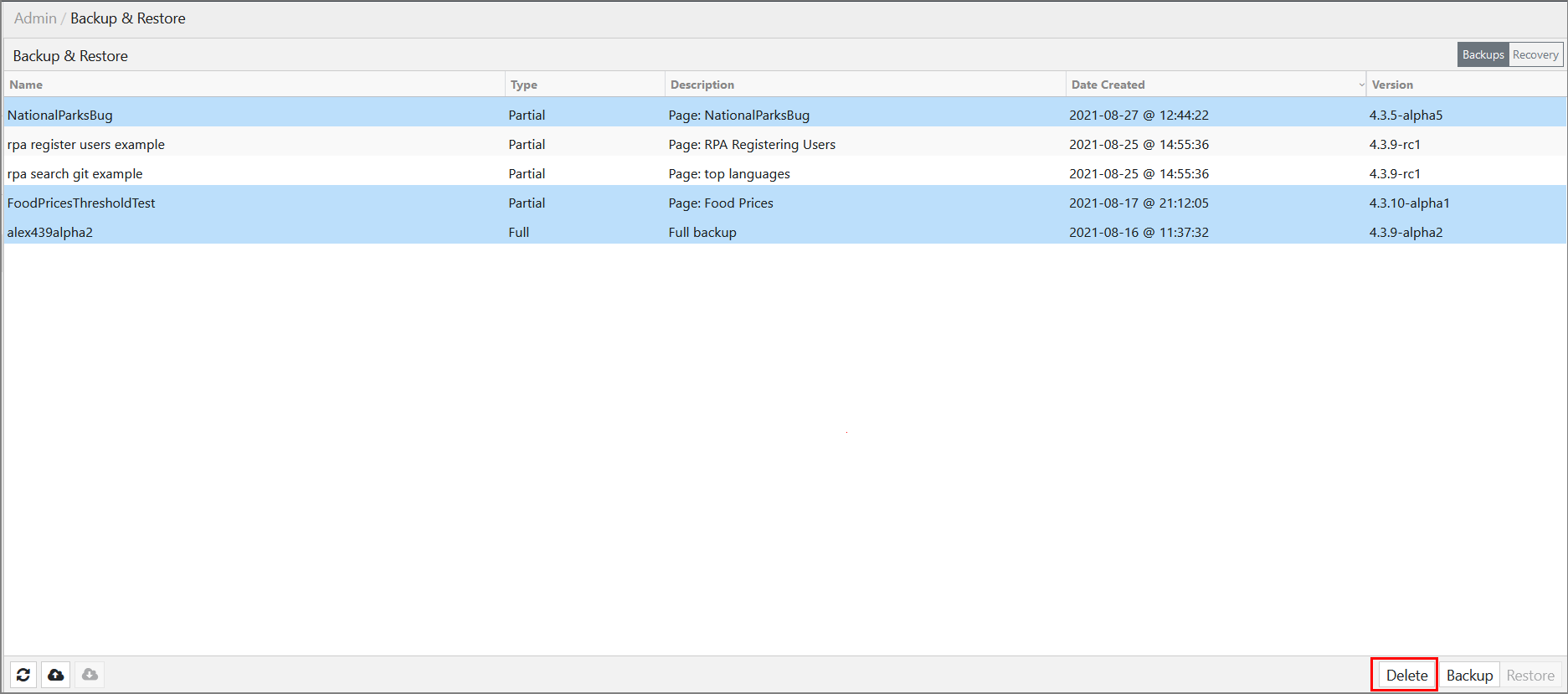Backup and Restore Overview
There are three different concepts exposed in the user interface when backing up a system:
- Full Backup
A full backup saves all configuration and assets for a system at a specific point in time. Restoring a full backup will return the system to the state it was in when the full backup was created. - Partial Backup
A partial backup saves only the relevant configuration for a selected page. This allows pieces of a system (content) to be shared between different servers. - Recovery Backup
A Recovery Backup is a full backup that is automatically created prior to performing any restore operation or installation of a module. It is good practice to periodically create a full backup to prevent the loss of work. Recovery backups are automatically created to ensure changes to a system are not unintentionally lost due to restore operations.
To access the Backup & Restore page, you can either:
- click
 in the Admin menu (the vertical bar that runs down the left side of an administrator’s screen);
in the Admin menu (the vertical bar that runs down the left side of an administrator’s screen); - click the hamburger menu > Content > Backup & Restore;
Note: When importing partial archives generated from versions prior to edgeCore v3.4, pages can have some unexpected behavior. This is due to the way pages are identified. This will likely only be an issue in a deployment with multiple servers, where some servers are still running older versions of edgeCore. The best practice is to keep all edgeCore server versions synchronized to the latest version.
Purpose of a Backup
Backups are used in a number of different scenarios:
- They provide a mechanism to migrate configuration from one environment to another. For example, migration from development to staging, to production.
- They are used when upgrading Edge to a newer version.
- They can provide a stable instance that can be restored in the event that the system gets in a bad state.
- They provide a way for Edge Support to investigate and troubleshoot support issues. The Edge Support Team may request a backup archive when isolating a problem.
Backup & Restore Interface
The Backup & Restore interface separates out manually created full and partial backups from recovery backups that are automatically created. Users can toggle between the two different groups of backups using the toggle control in the top right corner:
- Backups – Shows all manually created full and partial backups.
- Recovery – Shows all automatically created backups. Recovery backups are full backups created prior to restore operation.
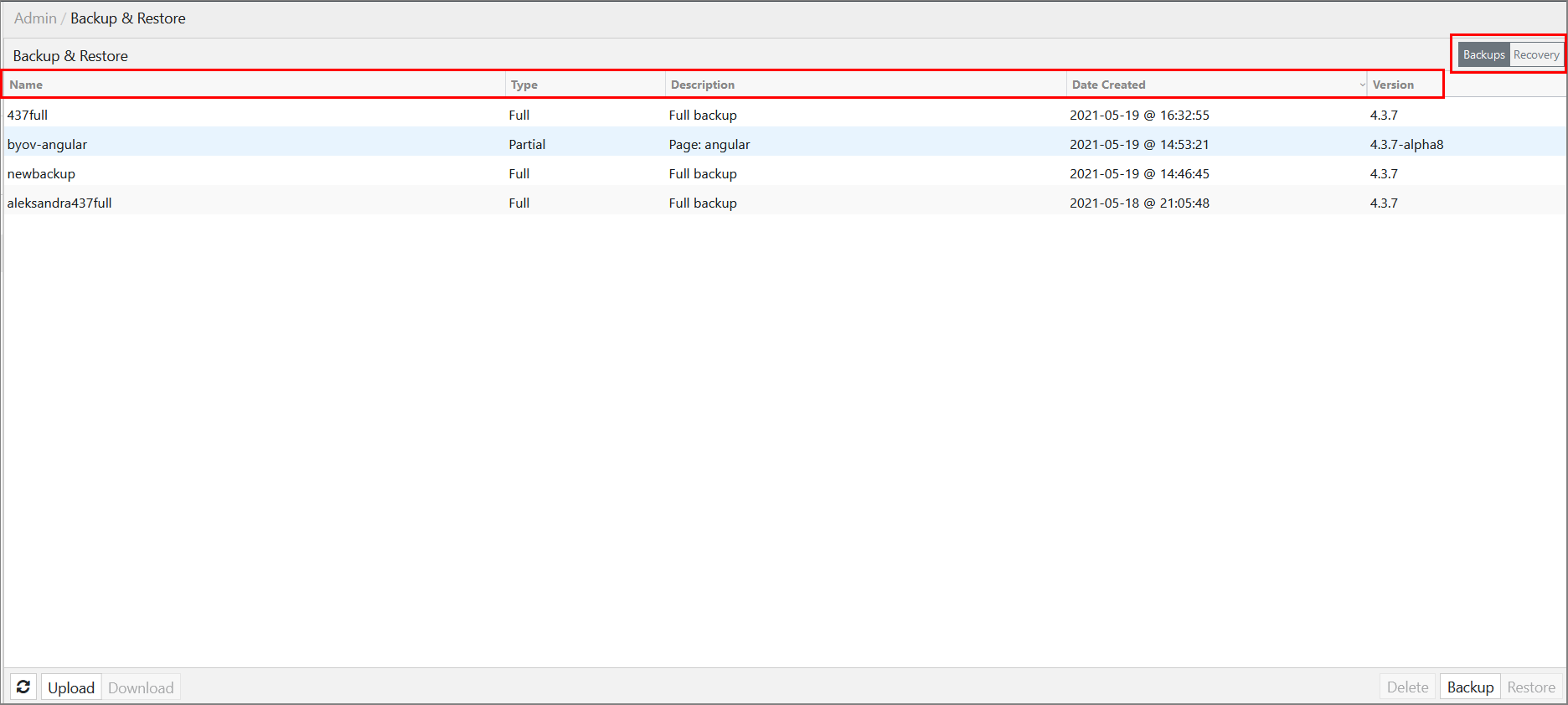
The list of backups appears in a table with the following information (as seen above):
- Name
The name that was given to this backup. Some backup names are automatically generated, which includes the date and time the backup was created to make it unique. This name is also used for the name of the backup file edgeCore creates on the file system, so it must only contain characters valid for a filename. - Type
The type of backup file for this backup (either full or partial).
– Full: All configuration and assets for a system at a specific point in time. On the server file system, full backups are named with a .zip extension;
– Partial: Only relevant configuration required for selected pages. On the server file system, partial backups are named with a .esb extension; - Description
This column contains additional descriptive information. It is particularly useful when working with recovery backups because the system will provide information about why the recovery file was created. - Date Created
The date and time a backup was created. - Version
The version of edgeCore used to create the backup archive. - Size (introduced in version 4.4.1)
The size of the archive. Both Backups and Recovery tabs can be sorted by size. Moreover, when the Recovery directory becomes larger than 5GB, a message will be displayed to notify the admin.

File Location
Backup files are saved to the edgeCore server’s file system.
- Backups:
Manually created full and partial backups are located here:[Install_Home]/exports/ - Recovery:
Automatically created recovery files are located here:[Install_Home]/exports/recovery
Creating a Backup
Creating a backup is accomplished by clicking the Backup button in the bottom right corner. After clicking the Backup button, the Configure Backup dialog is displayed.
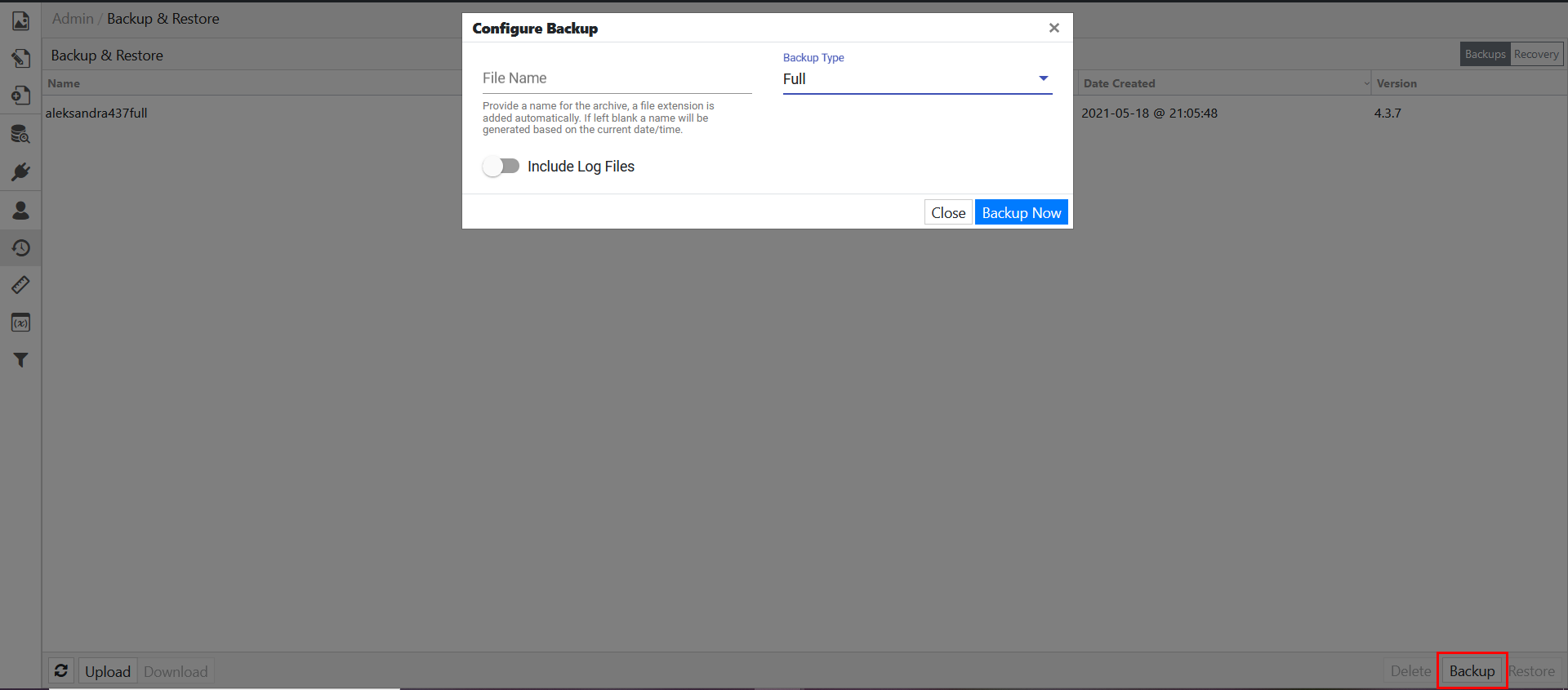
In the Configure Backup dialog, do the following:
- In File Name, specify a name for the backup.
If you leave the name blank, the system will include the date and time in the backup name for reference. - In Backup Type, select the type of backup you want:
– Full: Saves everything in the system. Restoring a full backup will restore the system to that point in time.
– Partial Backup: Saves all the associated configuration and assets for selected pages. This is a good way to share content across systems. - Enable or disable the Include Log Files toggle switch to specify whether log files should be included with the archive.
This option is mainly used when working with Edge Support.
Once you click Backup Now, the archive is created, and a dialog appears showing a summary of its contents. The summary enables you to validate the contents of a backup. The same preview will appear prior to restoring a backup.
Additionally, clicking on the pie chart will show a list of the individual files for the selected category.
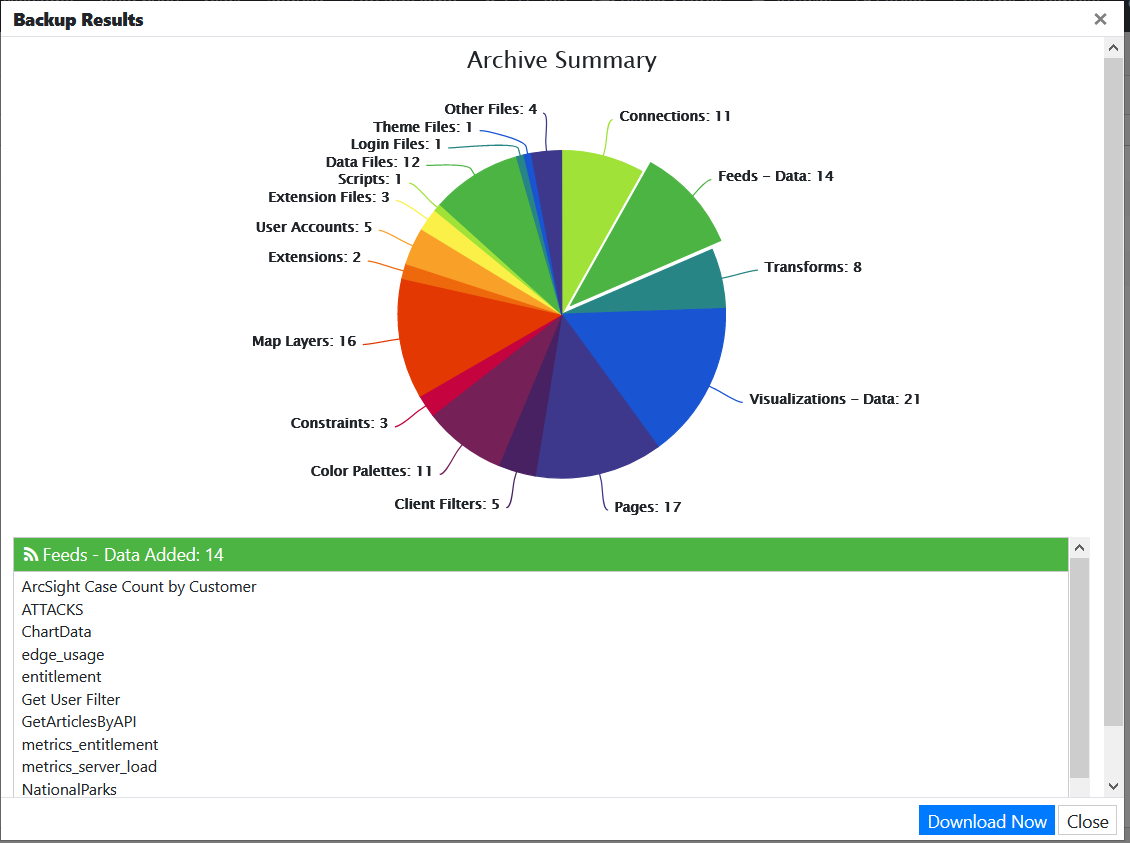
As a final step, click Download Now to download the archive.
Restoring an Archive
This option becomes available after selecting an item in the table. The User Interface will vary based on the type of archive being restored. See the following sections for additional information:
Uploading an Archive
The Upload button in the bottom left corner enables you to move an archive from your local system up to the edgeCore server. Upon clicking the Upload button, the Upload Archive dialog will appear, allowing you to upload a single archive file or multiple files.
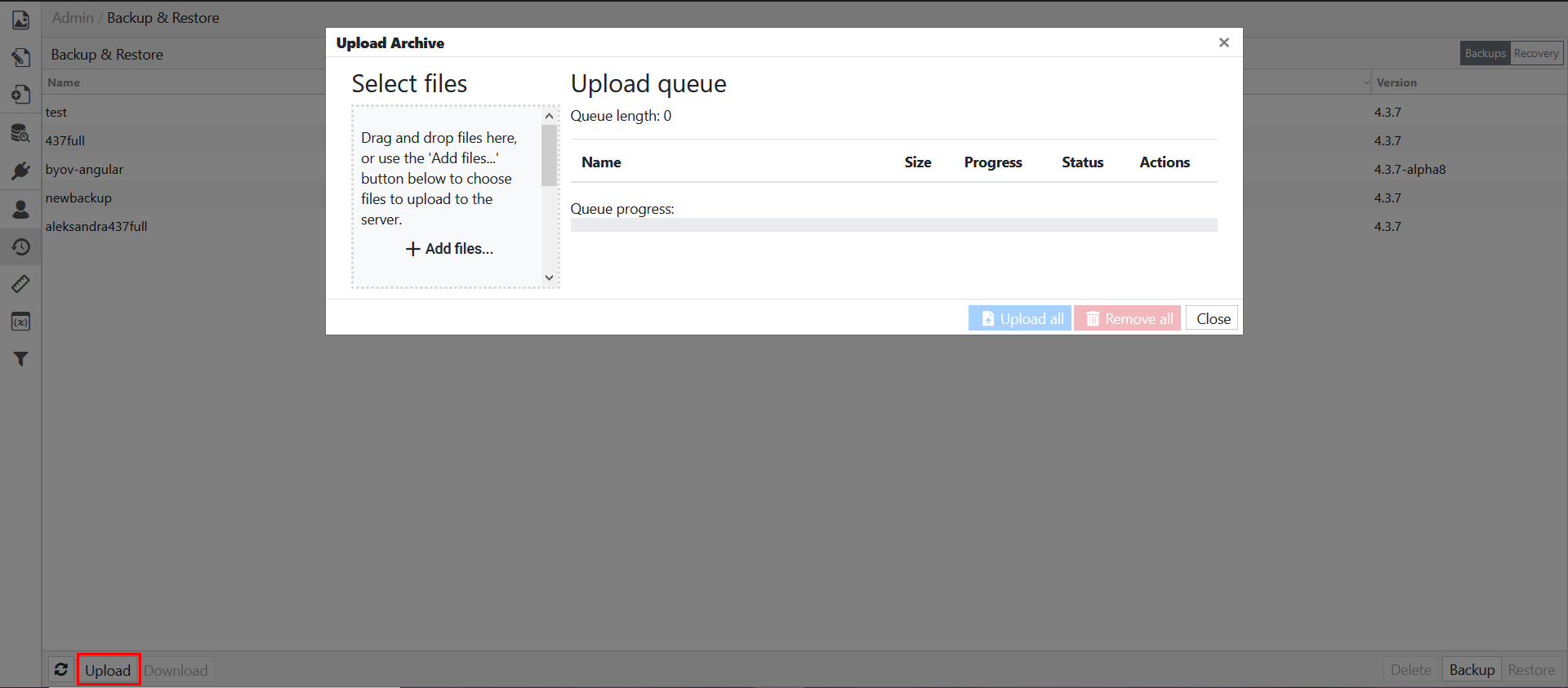
Downloading an Archive
The Download button in the bottom left corner enables you to move an archive from the edgeCore server to your local system.
Backup and Restore Security Permissions
edgeCore version: 4.3.6
You need to assign security permissions to a user in order for the user to be able to:
– create both full & partial backups
– create only partial backups
– restore both full & partial backups
– restore only partial backups

Deleting Backups
edgeCore version: 4.3.7
To delete backups and recovery, select the archive you want to delete and then click the Delete button in the bottom right corner.
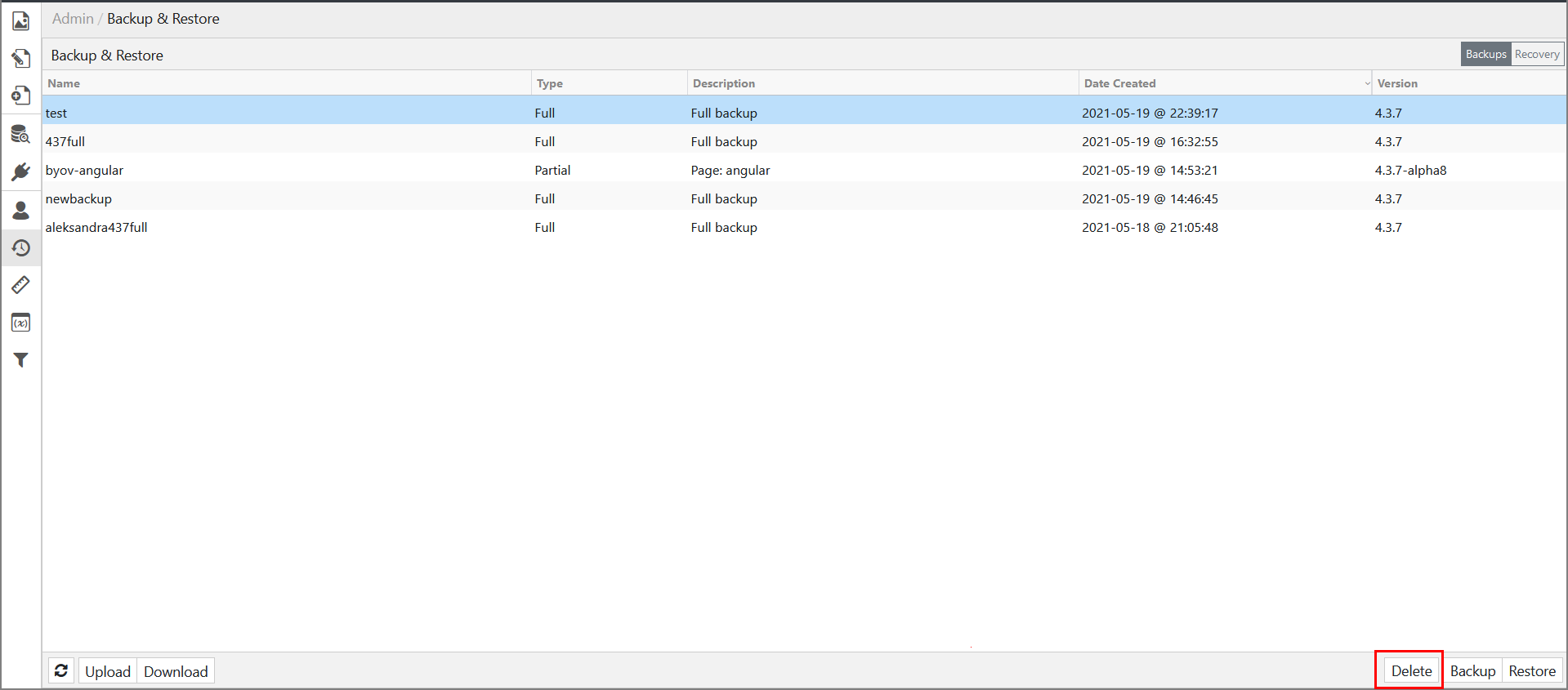
You need to assign security permissions to a user in order for the user to be able to:
– delete both full & partial archives
– delete only partial archives
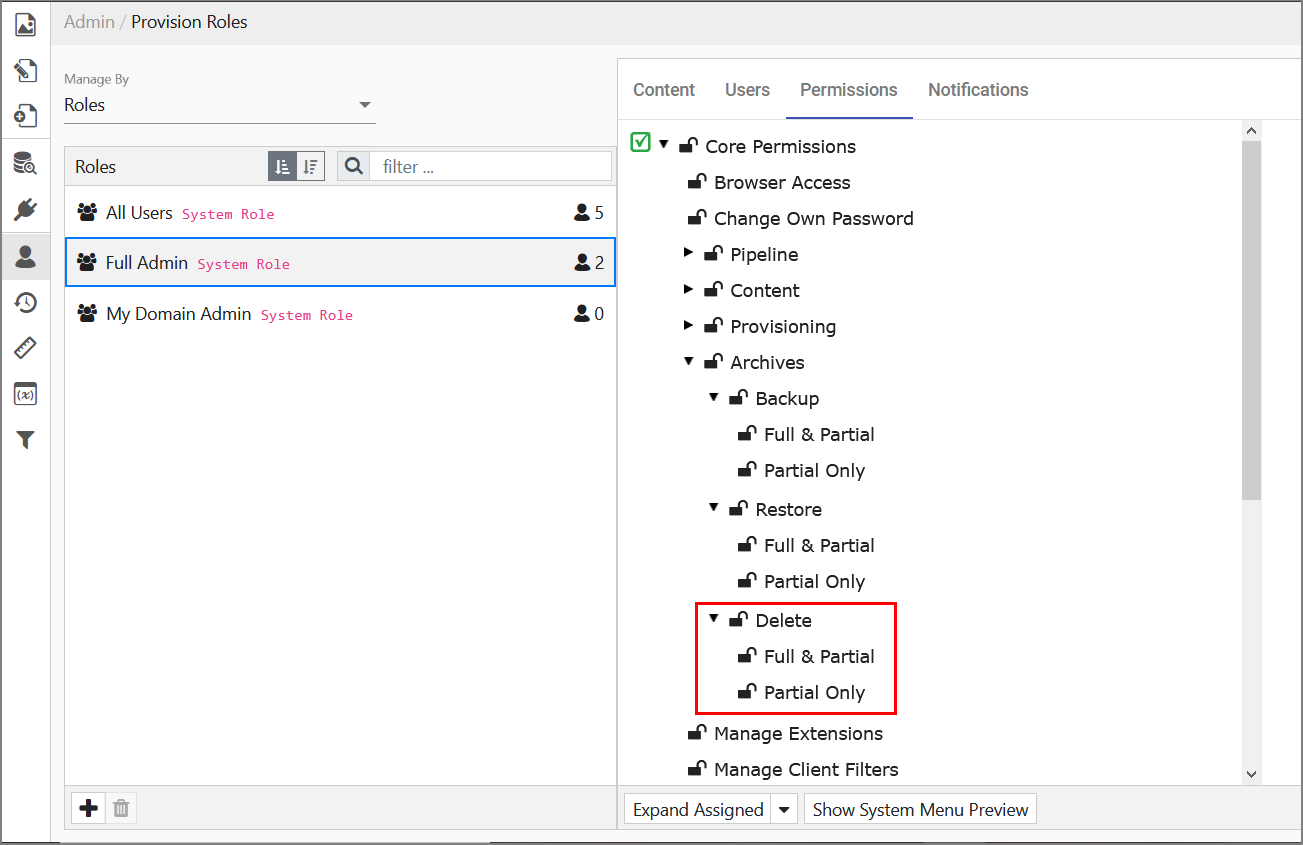
edgeCore version: 4.3.9
You can delete multiple archives at once without having to delete each archive individually.
To select multiple archives, hold Shift or Ctrl keys and click on the archives you want to delete.
